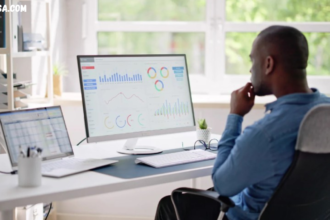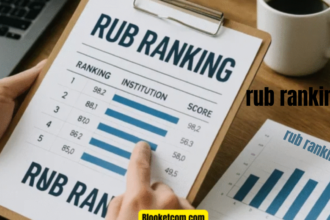If you’ve ever scanned through your bank or credit card statement and noticed a charge labeled “AMZN MKTP US,” you’re not alone. This cryptic line item often raises concerns, especially if you don’t immediately recall making a purchase. With online shopping becoming a central part of modern life, it’s easy to lose track of where your money goes—especially when retailers like Amazon process payments under different labels.
“AMZN MKTP US” stands for “Amazon Marketplace United States,” and it typically appears when you’ve made a purchase from a third-party seller via Amazon.com. As straightforward as that may sound, the implications can be more complex. Was the charge authorized? Did someone else on your account make the purchase? Or worse—could it be fraudulent?
In this article, we’ll demystify the meaning of AMZN MKTP US, break down how Amazon’s marketplace functions, and help you track and manage these types of charges. Whether you’re an avid online shopper or a casual buyer, understanding these details will empower you to take full control of your finances and online purchases.
Understanding AMZN MKTP US
What Does AMZN MKTP US Stand For?

“AMZN MKTP US” is an abbreviation used by Amazon to represent transactions made through its U.S.-based online marketplace. You’ll commonly find this label on your banking or credit card statements after making purchases on Amazon.com—especially when those items come from independent sellers rather than directly from Amazon.
Unlike traditional retail transactions, online purchases often come with cryptic transaction descriptions. Banks and credit card companies shorten names to fit statement formats, which is why you won’t see a full product title listed. Instead, “AMZN MKTP US” becomes the universal placeholder for any transaction originating from Amazon’s marketplace, which includes millions of third-party sellers.
Understanding this code is key to identifying your purchases correctly. It doesn’t mean your account was compromised, but it does require a bit of diligence to ensure the charge aligns with an order you actually made.
Difference Between Amazon.com and AMZN MKTP US
While Amazon.com is the overarching e-commerce platform, AMZN MKTP US specifically references purchases made through the marketplace—which is a vast ecosystem of independent sellers who use Amazon’s platform to reach customers. These sellers operate like small or medium businesses, often offering products not sold directly by Amazon.
Here’s the difference: if you buy an item “Sold by Amazon,” your statement might simply show “Amazon” or “Amazon Digital.” But when your purchase is from a third-party vendor—even if the item was fulfilled by Amazon—the label “AMZN MKTP US” appears. It’s a subtle yet important distinction.
This setup allows Amazon to offer a broader selection of products, often with competitive pricing. However, it also opens the door to inconsistencies in billing names, making it crucial for consumers to know how to track these charges effectively.
How Amazon Marketplace Works
Amazon Marketplace is essentially a digital shopping mall, hosting millions of sellers who list products across every imaginable category. When you place an order, you’re either buying from Amazon itself or from one of these third-party vendors. Amazon facilitates the transaction, processes the payment, and, in many cases, handles the shipping and customer service through its Fulfillment by Amazon (FBA) program.
With FBA, sellers send their inventory to Amazon’s warehouses, and Amazon handles everything from packing to delivery. This often leads customers to believe they’re buying directly from Amazon when in fact, it’s a third-party seller behind the scenes. Alternatively, in Fulfillment by Merchant (FBM), the seller handles all logistics independently.
This structure enables Amazon to scale its offerings while maintaining a relatively hands-off approach to inventory. It’s a win-win for Amazon and many sellers—but for consumers, it means additional layers of complexity when reconciling purchases.
Why You Might See AMZN MKTP US on Your Statement
Legitimate Reasons for the Charge
There are several reasons a charge labeled AMZN MKTP US might appear, and most of them are completely legitimate. The most obvious reason is that you’ve purchased a physical product from a third-party seller. But that’s not all—it could also be from buying digital goods like Kindle books, streaming content, or even a gift card.
Some recurring services—such as magazine subscriptions, streaming add-ons, or partner apps—may also bill under this name. If you’re part of a family account or manage household purchases from a single login, any member’s order could result in this kind of charge.
Additionally, sellers sometimes combine multiple items into one transaction, especially during promotions or when shipping from the same location. That can make it harder to match a charge to a specific item if you’re expecting each purchase to appear individually.
Accidental or Forgotten Purchases
In our age of one-click buying and voice assistants, it’s surprisingly easy to make accidental purchases. Children using a shared Amazon account, Alexa-triggered purchases, or even multiple browser tabs can result in forgotten orders. With multiple family members accessing the same account, it’s not uncommon for someone to buy something without telling others.
Many Amazon users also pre-order items that don’t ship until weeks later. When these items are finally charged, the time gap can make it harder to remember the original order. Combine that with delayed billing practices, and you’ve got a recipe for confusion.
That’s why it’s essential to keep your Amazon account organized, enable email receipts, and double-check your order history regularly.
Unauthorized or Fraudulent Charges
Although most AMZN MKTP US charges are legitimate, fraud is always a possibility. Cybercriminals often test stolen cards by making small purchases on trusted platforms like Amazon. If you see an unfamiliar charge and can’t find a corresponding order, it could be a red flag.
Fraudulent charges might also stem from data breaches, phishing scams, or compromised login credentials. In such cases, prompt action is critical. Start by checking your order history, then contact Amazon’s customer service if the charge remains unidentifiable. You may also need to dispute the transaction with your bank or card issuer.
Enabling multi-factor authentication and reviewing authorized devices regularly can help prevent future incidents and add a vital layer of security.
How to Investigate and Manage AMZN MKTP US Charges
Reviewing Your Amazon Order History
The first step in resolving an AMZN MKTP US charge is to log in to your Amazon account and review your order history. Navigate to “Your Orders,” and filter by date to align with the statement. Match the purchase total with the charge amount and inspect details such as the seller’s name and item type.
Amazon also provides digital receipts and confirmation emails for every order. Use your inbox to search keywords like “Amazon order” or specific dates to find related purchases. If you’ve deleted emails or used multiple accounts, double-check all possibilities.
You can even use the Amazon mobile app to verify recent transactions and subscription activity. Keeping tabs on your purchases weekly can prevent end-of-month confusion and ensure you stay in control of your spending.
Contacting Amazon Support
If you’ve done your homework and still can’t match the charge, reach out to Amazon Support. They have dedicated tools to help locate transactions by date, amount, and even card number used. Their customer service team is known for responsiveness and usually resolves billing inquiries quickly.
Visit Amazon’s “Help” section, initiate a chat, or request a call from a representative. Be ready with details—charge date, exact amount, and the last four digits of the card used. Amazon can issue refunds for unauthorized purchases or escalate the matter if fraud is suspected.
If the issue isn’t resolved with Amazon, your bank may step in to reverse the charge, especially in confirmed fraud cases.
Preventing Future Unwanted Charges
The best defense against unwanted charges is prevention. Set up transaction alerts on your banking app to get real-time updates when your card is charged. Use parental controls or pin-locks on Alexa-enabled devices to prevent accidental voice purchases.
Consider enabling Amazon’s “1-Click” purchase restrictions or turning it off altogether. You can also review connected devices and remove those you don’t recognize under your Amazon account settings. These proactive steps can significantly reduce the chances of confusing or unauthorized purchases in the future.
The Broader Context of Amazon Marketplace
Growth and Scale of Amazon’s Marketplace
Amazon Marketplace is not just a side operation—it’s a cornerstone of the company’s revenue. Over 60% of the units sold on Amazon come from third-party sellers. This includes individual entrepreneurs, brands, and international vendors, all leveraging Amazon’s reach to grow their businesses.
This scale enables consumers to enjoy an immense variety of products, often at lower prices. For Amazon, the marketplace model reduces the burden of inventory management while boosting profitability through fees and commissions.
Consumer Benefits and Risks
Consumers benefit from competitive pricing, diverse product options, and the convenience of Prime shipping (even for many marketplace items). However, this open structure also comes with risks—such as counterfeit goods, misleading product listings, or inconsistent seller policies.
Amazon actively monitors its sellers, but not every bad actor is caught immediately. That’s why checking seller ratings, reading reviews, and understanding return policies is essential before making a purchase.
How Amazon Handles Marketplace Transactions
When you buy from a marketplace seller, Amazon processes the payment and acts as the middleman. The charge still appears on your statement under Amazon’s label—hence the “AMZN MKTP US” tag. However, the product, packaging, and even shipping may come from a completely different business.
Amazon offers A-to-Z Guarantee protection, which allows you to request refunds or replacements if the product isn’t delivered or isn’t as described. This adds a safety net for consumers while allowing Amazon to maintain high service standards.
Conclusion
Seeing “AMZN MKTP US” on your statement isn’t necessarily cause for alarm—but it does warrant attention. With millions of transactions flowing through Amazon’s marketplace daily, understanding what this label represents is essential for responsible online shopping.
By educating yourself about how Amazon Marketplace works, how to track your purchases, and how to handle potential fraud, you can protect your finances while enjoying the benefits of a global shopping platform. Stay vigilant, use account management tools, and never hesitate to ask for help when something doesn’t seem right.
FAQs
What does AMZN MKTP US mean on my bank statement?
It refers to a purchase made through the Amazon Marketplace in the U.S., typically from a third-party seller.
Is AMZN MKTP US a legitimate charge?
In most cases, yes. However, if you don’t recognize the charge, you should review your Amazon order history or contact support.
How do I check what I bought on Amazon?
Log into your Amazon account, go to “Your Orders,” and filter by date to find the relevant purchase.
Can I get a refund for an AMZN MKTP US charge?
Yes, if the item was returned, defective, or the charge was unauthorized. Contact Amazon customer service for assistance.
Are AMZN MKTP US charges always from third-party sellers?
Generally, yes. Items sold by Amazon directly typically have a different transaction description.
You May Also Read: https://topbuzusa.com/meta-layoffs/





